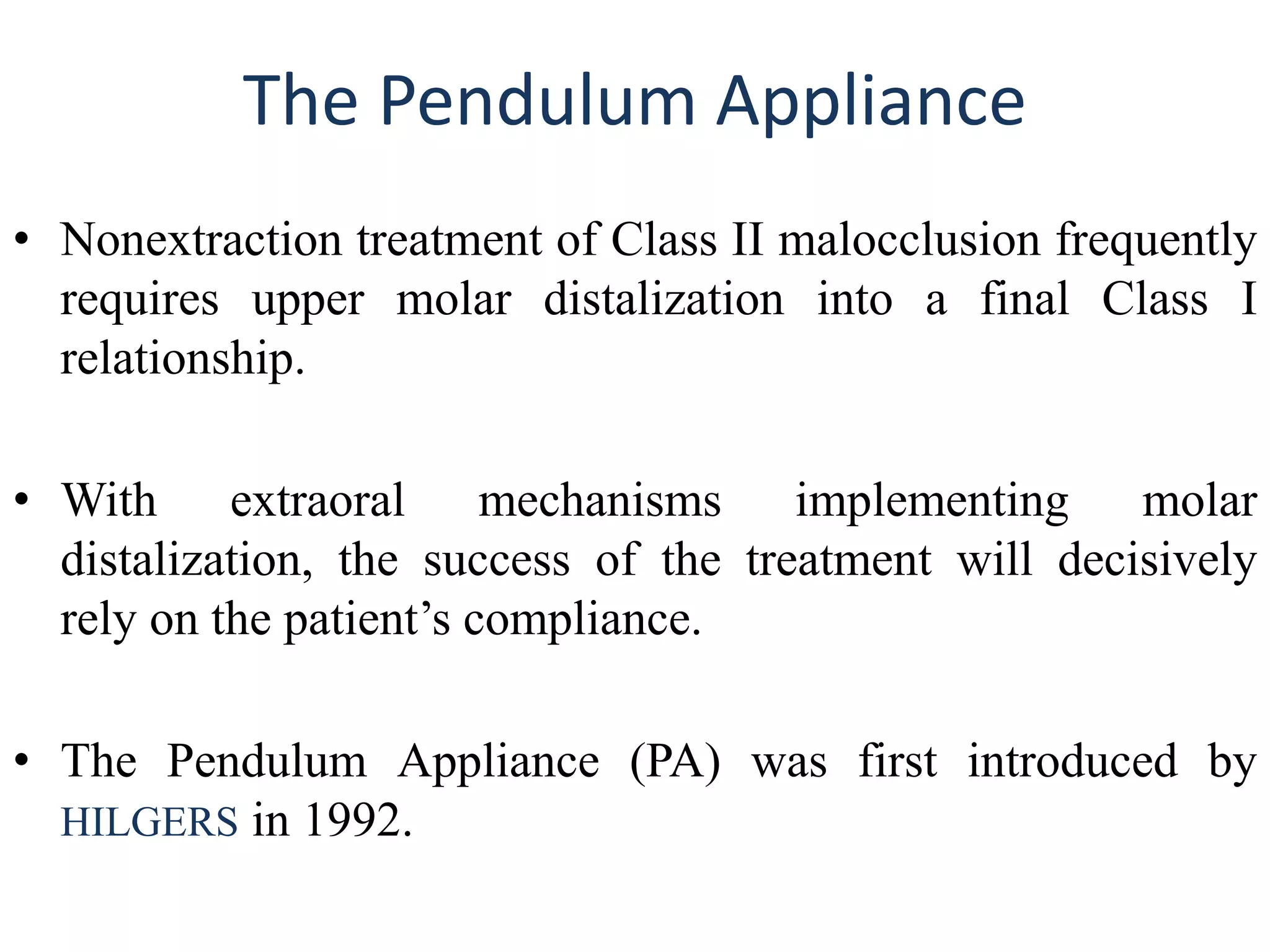This document summarizes different techniques for molar distalization including headgear, pendulum appliances, distal jet, keles slider, and magnets. Molar distalization is used to treat class II malocclusions by moving the maxillary molars distally. Key points discussed include indications such as tooth-size discrepancies, contraindications like severe protrusion, and factors that influence distalization like eruption of other molars. The document compares techniques and provides details on designs, mechanics, anchorage, and effects of various appliances.



























































